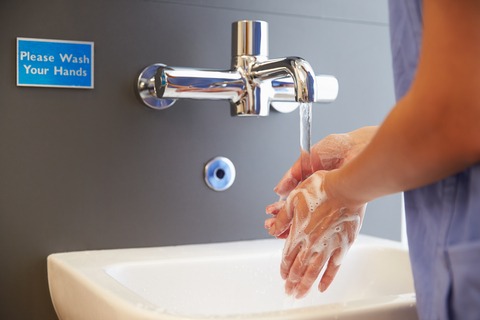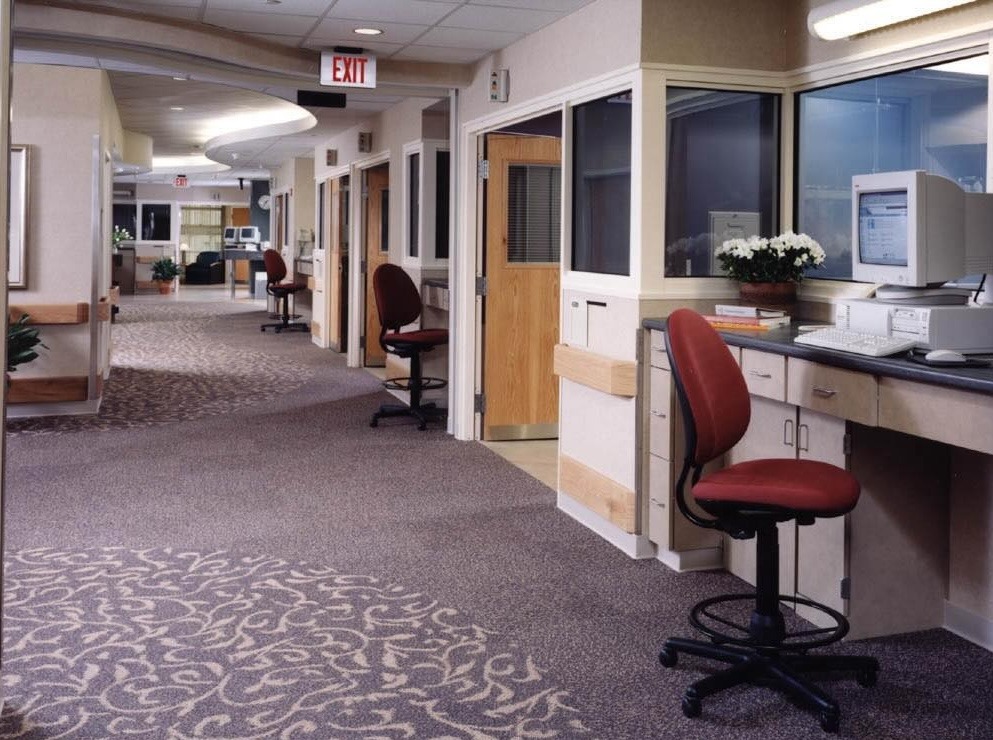What are the top patient safety issues for 2018?
And which of them are impacted by the hospital environment?
Recently Becker's Clinical Leadership & Infection Control editorial team picked its top 10 patient safety issues. These were based on news, study findings, and trends reported in the past year.
Of the 10, four can be directly impacted by the hospital's physical environment. Here they are, in no particular order:
1. Lack of Proper Hand Hygiene
While there has been progress in improving hand hygiene, it remains an issue. Giving patients hand-held signs to remind physicians to wash their hands and text-messaging to healthcare workers via smartphones have been shown to significantly increase compliance.
Physical environment contributors: poor room and/or unit layout, with sinks and gel dispensers hidden behind doors.
Design solutions: placement of sinks and gel dispensers and visual cues (lighting, pattern, color), automatic faucets.
2. Physician Burnout
A decrease in the amount of time spent with patients and increase in time spent doing data entry and clerical work is contributing to the number of physicians who experienced frequent or constant feelings of burnout.
Physical environment contributors: poor workplace environments that are crowded, messy and noisy; have bad lighting and no access to nature or natural light; and offer no place for respite.
Design solutions: pleasant breakrooms that offer positive distractions and views, outdoor spaces, unit configuration that provides views to outdoors and daylight, adequate workspaces with proper lighting and supportive seating, surface materials that minimize noise, storage for equipment and supplies, color-tuning light systems that mimic circadian rhythms.
3. Antibiotic Resistance
At the top of the World Health Organization's list of most dangerous superbugs are three strains of bacteria resistant to the antibiotic carbapeneum. And while carbapeneum-resistant hospital-acquired infections in the U.S. haven't necessarily been linked to person-to-person contact, officials are concerned it is being spread by other means.
Physical environment contributors: contaminated surface materials, seating with cracks and crevices that capture dirt, poor air quality and/or circulation.
Design solutions: private patient rooms, bacteria-resistant materials and finishes, easily cleanable materials and finishes, HEPA filters, seating designed to minimize dirt collection, "clean" lights that kill bacteria.
4. Opioid Epidemic
Post-surgical use of opioids is likely to be an important concern for healthcare professionals in the coming year. Expect use of virtual reality and other nonpharmacologic treatments for pain to increase.
Physical environment contributors: noisy, messy, crowded, poorly-lit patient rooms.
Design solutions: positive distractions, such as access to nature or art, as well as relaxation programming choices for the TV/patient portal. Surface materials and unit layout that help reduce noise, storage for equipment and supplies, controllable lighting, space for family members.
Want to Know More About Designing for Safety?
Check out The Center for Health Design's Safety Risk Assessment Tool.
What other design solutions have you used to promote safety? Please post your thoughts in the comment boxes below!
P.S. Please do me a favor -- if you liked this post and like this blog, please share it with others by sending them the link or posting it on your Twitter, LinkedIn, or Facebook. Also, don't forget to subscribe, so you'll get emails when new content is posted. Thanks!







